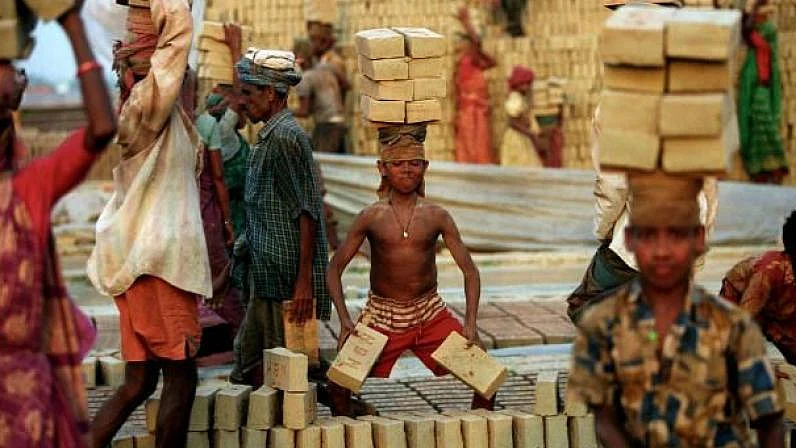₹2 hike in minimum wages and the $5 trillion dream
As per latest ILO report, 41% of workers in India are poorly paid. India stands 4th from bottom in salary satisfaction among 22 Asia-Pacific nations, just above Bangladesh, Pakistan and Mongolia

The Labour Ministry’s expert committee recommended: “Minimum wage should be hiked from Rs. 176 per day to Rs. 375”.
The Economic Survey prepared by the Chief Economic Advisor said: “Raising the wage floor substantially will go a long way to reduce income inequality and poverty”.
Rejecting the Rs. 375 recommendation and turning a deaf ear to the Survey’s suggestion, the national minimum wage has been fixed at Rs. 178 per day.
A government official made the announcement without batting an eyelid. The Union Cabinet has approved a hike of rupees two in the national minimum wage, he said.
Incredulous reporters thought they might have misheard. “Can you please repeat? By how much has the minimum wage been increased?”
Answer: The minimum wage has been raised from Rs 176 to Rs. 178 per day. The quantum of hike is Rs. 2.
Question: Only two rupees per day? But didn’t the Expert Committee recommend almost doubling the minimum wage? Didn’t Chief Economic Advisor say a substantial increase would reduce poverty and income inequality?
Answer: So what? We are not concerned about committees and surveys. I am informing you about what has been decided by the Union Cabinet headed by the Prime Minister Shri Narendra Modi.
Trade unions and rights activists are in shock. There a sense of disbelief. Two rupees? Just two rupees? What happened to the promise of ‘Sabka Sath, Sakba Vikas’?
No answer. But in the distance could be heard the sound of hands being clapped in corporate boardrooms.
It is all in the name of labour reforms. Global investors and domestic companies have been clamouring for a new Wage Code for quite some time. The new government has sent out a strong signal - it wants to be known as a suit-boot sarkar once again.
Off-the-record a ministry official admitted: “Yes, the minimum wage should have been raised by at least Rs. 75 or Rs. 100. But what can we do when there is so much pressure from employers lobbies, industry chambers and foreign investors?”
He added: There is also the pressing need to cut down expenditure. Fiscal deficit is a big headache. Read the Budget carefully, go through the small print in the annexure documents – you will find that this time allocations have been drastically reduced in many, many areas. We have to cut costs wherever we can. As a result total expenditure is much less than earlier. That’s why the Minister avoided giving figures and numbers in her Budget Speech.
Another official put it into perspective: Look, times have changed. Employers are more important than employees. Let us not be too sentimental about it. Low wage workers are in any case very poor.
His colleague explained: Giving them a few rupees more as minimum wage is not going to make them affluent. It is not as if their consumption pattern will change dramatically. They are not going to be able to afford cars and refrigerators. Ha ha.
Another justification for the paltry two rupee hike: Are you not aware that most employers in India never implement minimum wages in any case? There is no way to enforce compliance of the Wage Code. Don’t you know that even doubling the amount will not really help workers? In remote hilly States, for example, actual wages paid are always much less than the stipulated minimum amount.
Reporter: But didn't the Economic Survey assert that a well-designed minimum wage system “can be a potent tool for protecting workers and alleviating poverty”?
Answer: Maybe it did, but the fact is that higher minimum wage will not lead to new job creation. It will not generate more employment opportunities. Right priorities are different, strategies are different. See, the Prime Minister’s logic is simple - implement labour reforms, make the companies happy, and only that will lead to more factories and more jobs.
Reporter: The ILO report of November 2018 said that 41 percent of Indian workers are poorly paid. India stands fourth from the bottom in salary satisfaction among the 22 countries of the Asia-Pacific region. Only Bangladesh, Pakistan and Mongolia have lower levels than us.
So what? Stop worrying about losers. There is no time to waste on trying to pull low wage workers out of poverty, or to stop their whining. Most of them have got accustomed to being poor. They find ways to survive somehow.
Modiji has set his sights high. His dream is to make India a five trillion dollar economy by 2024. So the focus has to be on big investors. Five trillion dollars is all that matters.
Follow us on: Facebook, Twitter, Google News, Instagram
Join our official telegram channel (@nationalherald) and stay updated with the latest headlines
- economy
- International Labour Organisation
- ILO
- minimum wages
- Union Budget 2019
- five trillion dollar economy